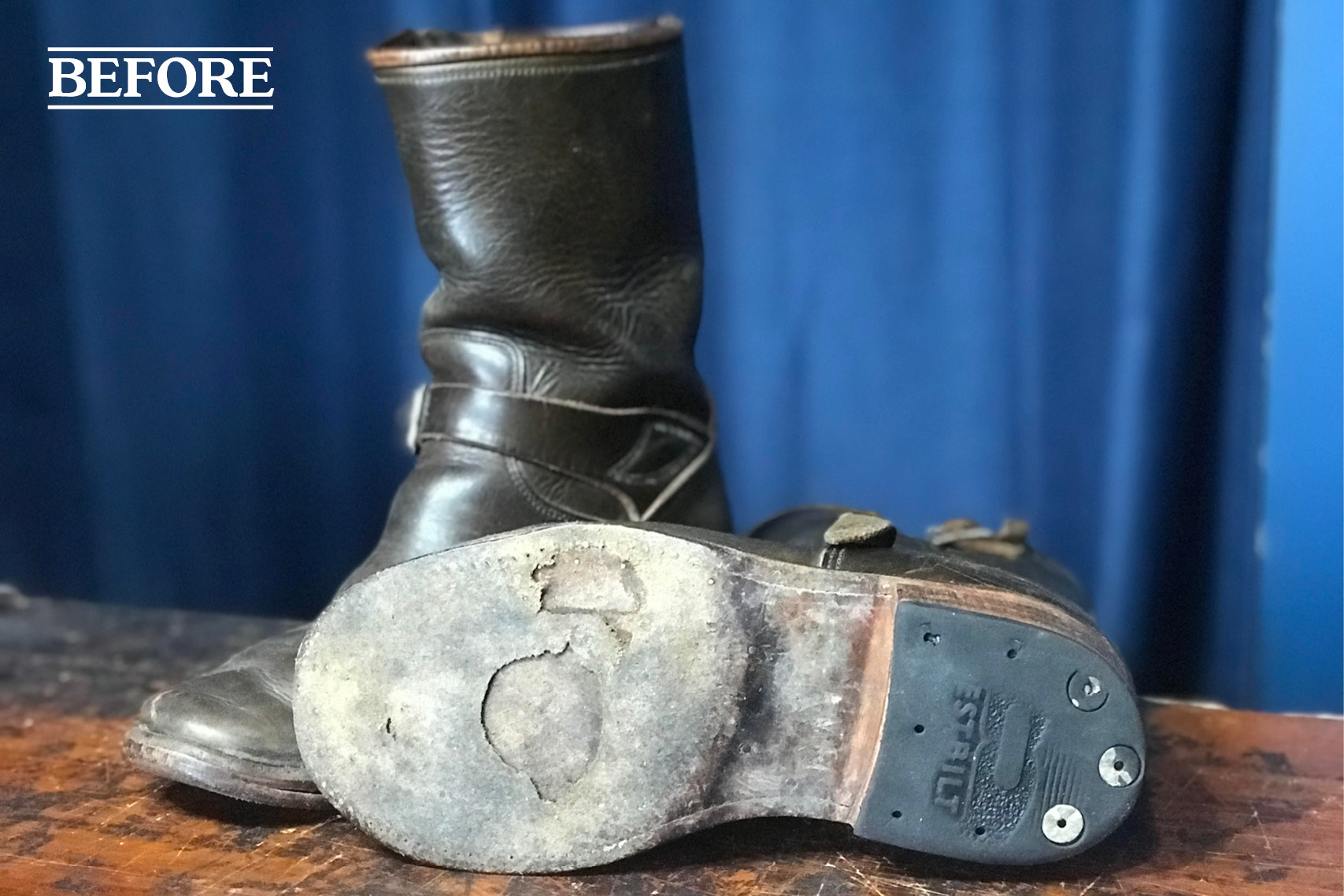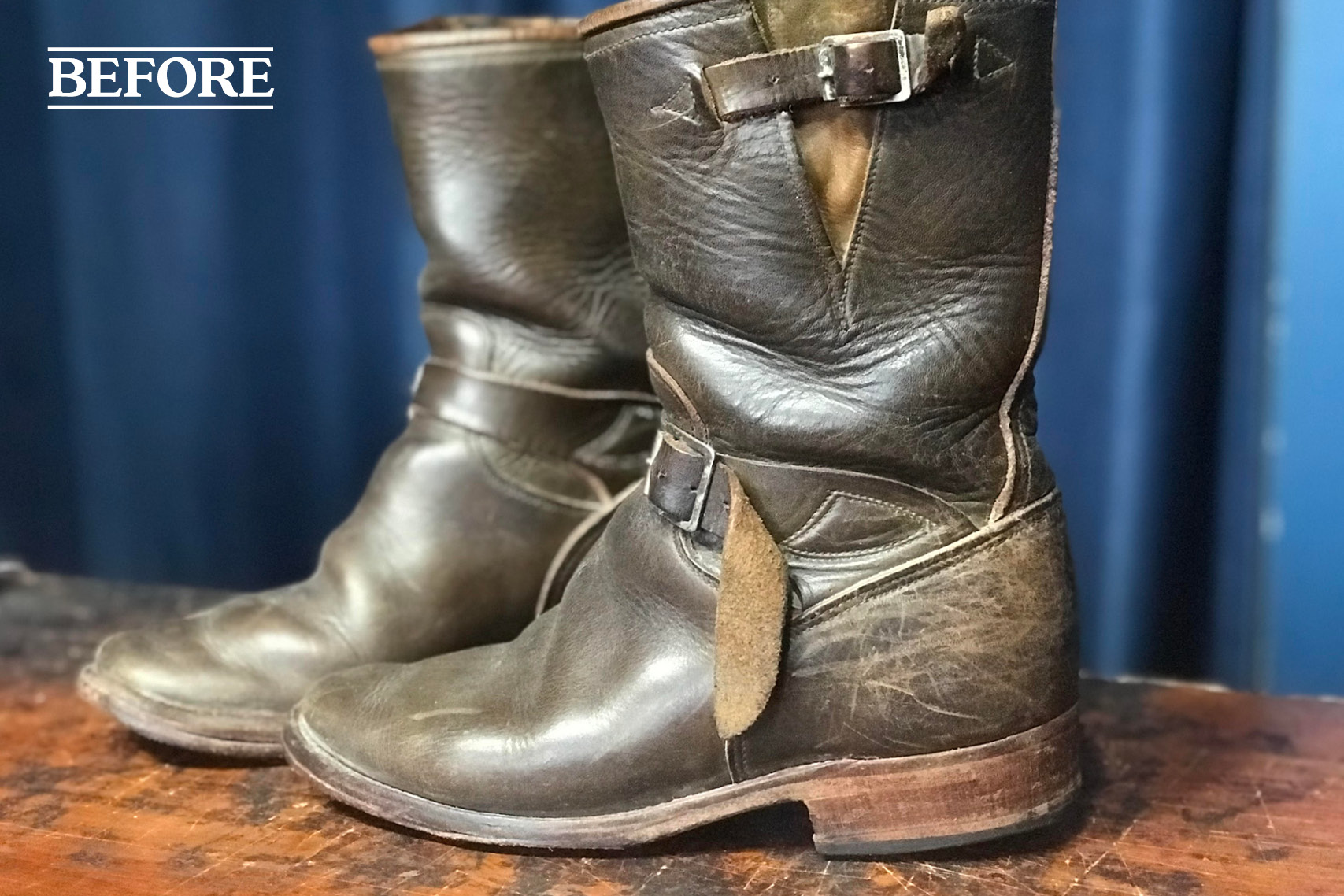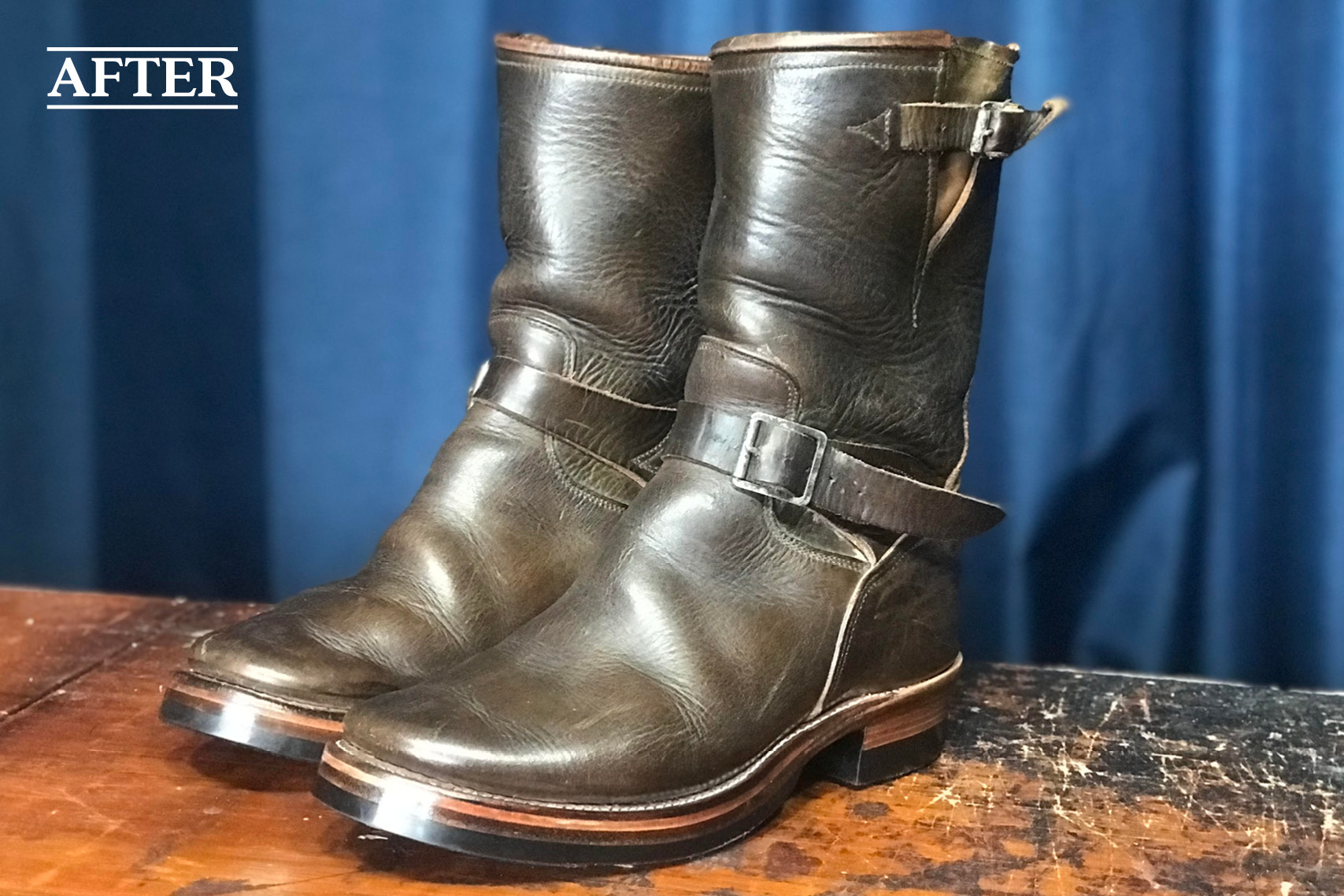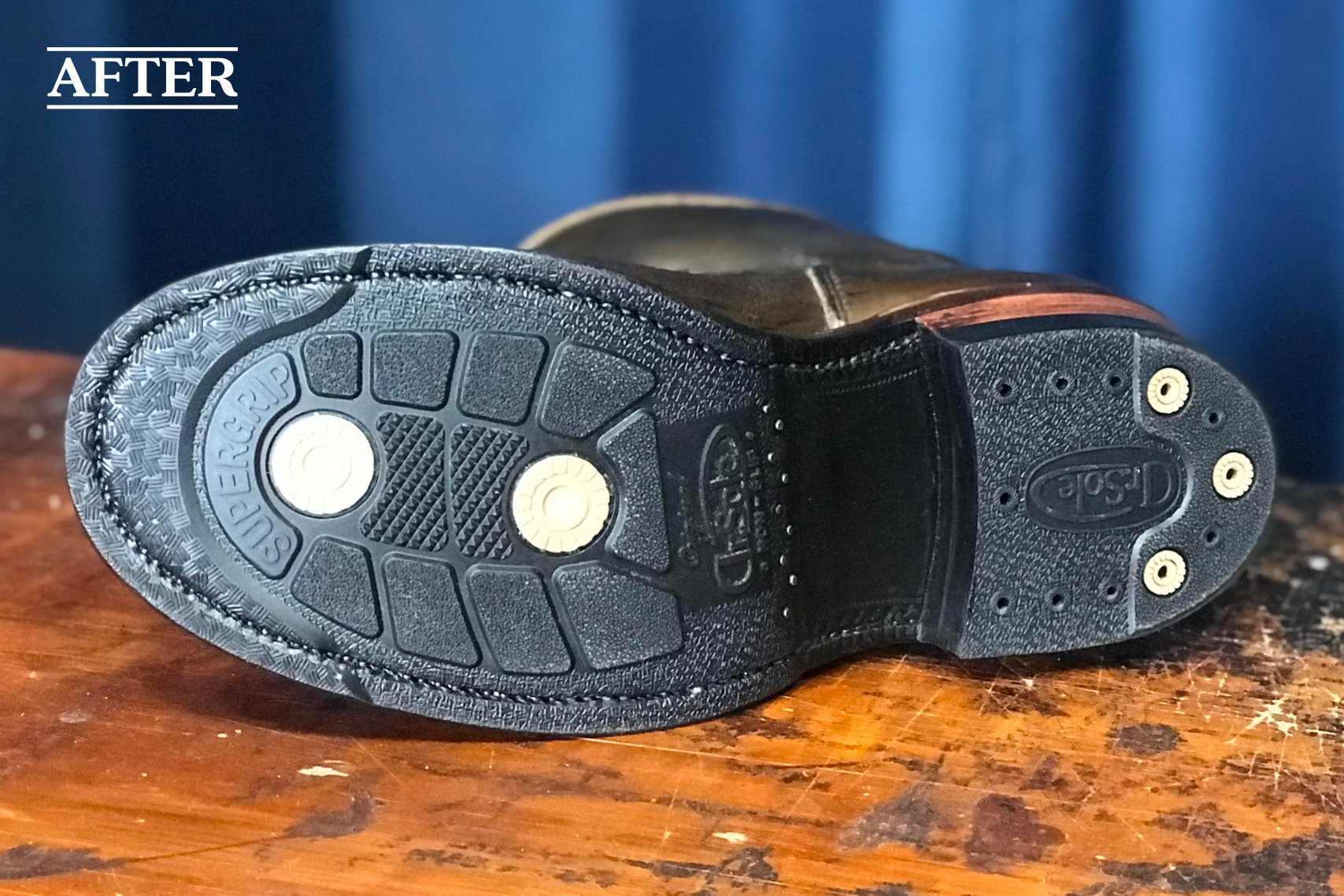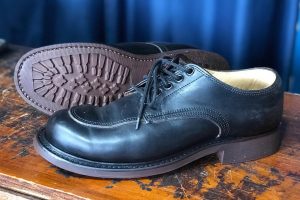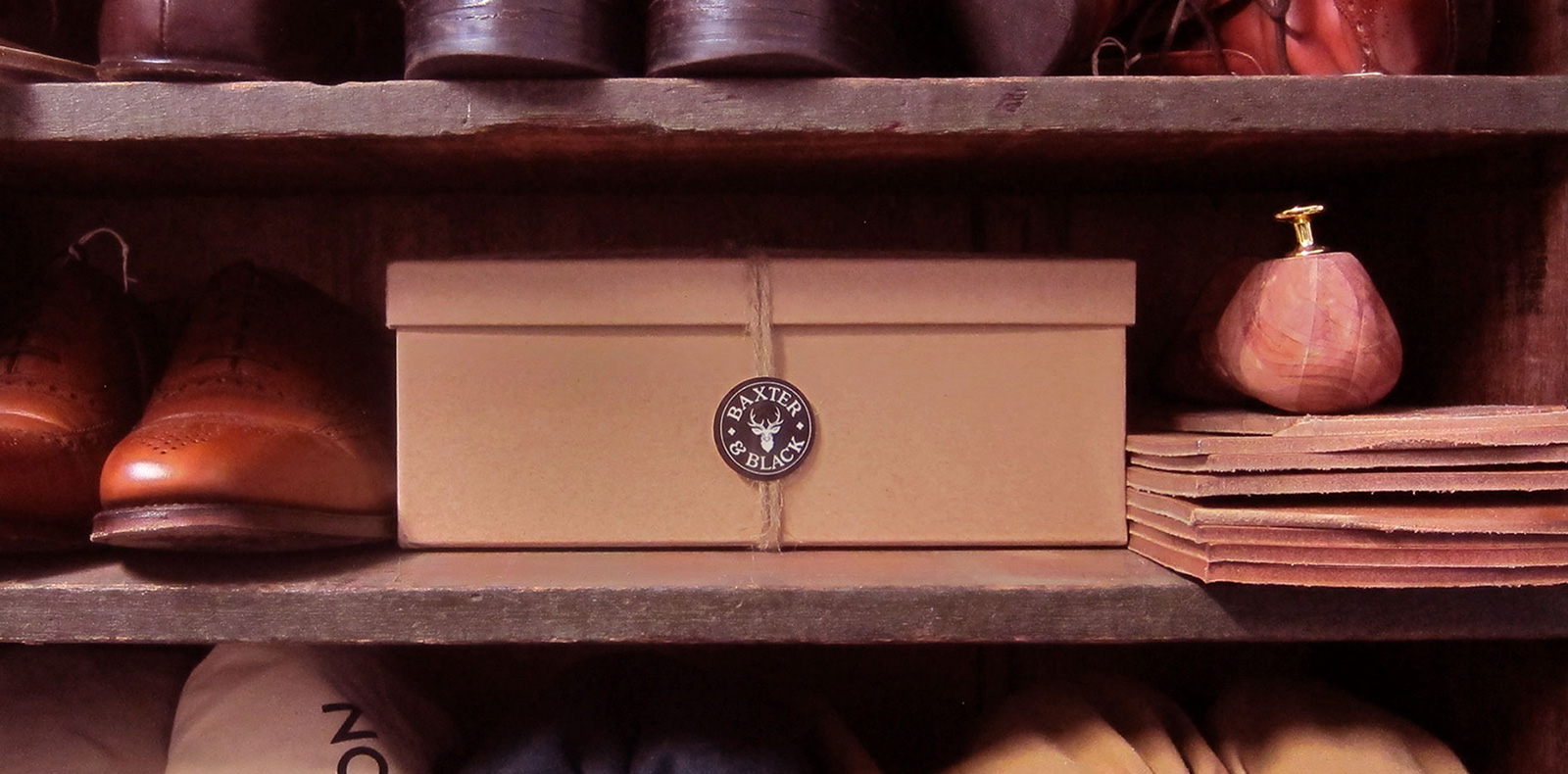
Motorcycle boot resole
Motorcycle boots get a hard life. It is important to give them the right attention. With this in mind, we needed to retain their grip and abrasion resistance when we do a motorcycle boot resole. Our client brought these in boots in with a couple of others. These were the boots they were most concerned about because of the buckling of the vamp. Additionally, they were taking on a squarish shape.
With some investigation, we could see that the waist had collapsed. Because of this, it had lead to the heel block falling inwards. The leather sole had also become worn to the point where it was offering no actual support. There was no structure to the forefoot.
Looking at how the boot was falling in on itself, we could see that the bootleg had started to fall forward. That was leading to the creasing in the vamp. We needed to extend the heel block due to the way our client walked in them.
With this in mind, we decided to do a full recraft. Including a new heel base, stacked heel block, veg-tan midsole at the forefoot, full leather JR sole, and a Dr. Sole Supergrip rubber half-sole.
Our Process
- To begin the motorcycle boot resole, we fitted in a boot last. Then took off all the sole and heel block from the welt down. We laid in fresh cork and unpicked the old welt stitching.
- We made a new heel base. Additionally, we roughed the top of the leather that is glued to the uppers heel base. Then glued both the heel base and underside of the heel of the upper and glued it in place. Once dry, we tacked it down.
- We wanted to make sure that the side profile of the boot wasn’t clunky. With this in mind, we made the midsole thin out just before the end of where the Dr. Sole SuperGrip sole would sit. Rough sanding the midsole we then put two base layers of glue on both the midsole and the bottom of the boot to be glued.
- Once dry we reactivated with heat and set the midsole in place on both boots.
- With the heel base and midsole drying, we rough sanded the JR leather sole and applied two layers of glue and put aside. We applied two layers of glue to the top of the midsole and new heel base and put aside.
- Whilst waiting for them to dry we rough sanded the Dr. Sole SuperGrip sole and the washer heel cleaned them with acetone and let them dry. Once dry we applied two layers of glue to the Supergrip sole because the sole is quite absorbent of the glue we made sure all the surface was adequately covered in glue.
- With the glue on the JR and midsole/heel base dry, we reheat them and bond them together.
- After they have time to dry and cure we trim the excess midsole and JR sole to the welt and mark out where the SuperGrip sole will sit on the JR sole and rough sand the section and then glue. With the glue dried on both the SuperGrip sole and JR leather we heated up the two sections and then bonded them together and let sit.
- With the SuperGrip half sole on the boot, we can then go about getting the right height for the heel block. Starting by cutting the heel block layers that we need we place the washer heel in the right position. We get the right amount of heel leather stack pieces.
- Glueing our first heel stack onto the base of the boot we then cut it away so that with the stacked leather of the heel block and the washer heel we have the correct toe spring, the shaft of the boot is sitting correctly upright, and the base of the heel is at the correct angle.
- Once this is achieved we nail and glue each layer into place. We then fit the washer heel with clinch nails. Peening the leather heel block we get the correct rough shape we want. After this, we sand the heel block and the washer heel to the desired angle.
- With the edges clean and trimmed to the welt, we then polish the welt edge and washer heel. We use a hard neutral wax that develops a high shine and use The Mails Shoe care Company Neutral Oil to nourish the upper.
